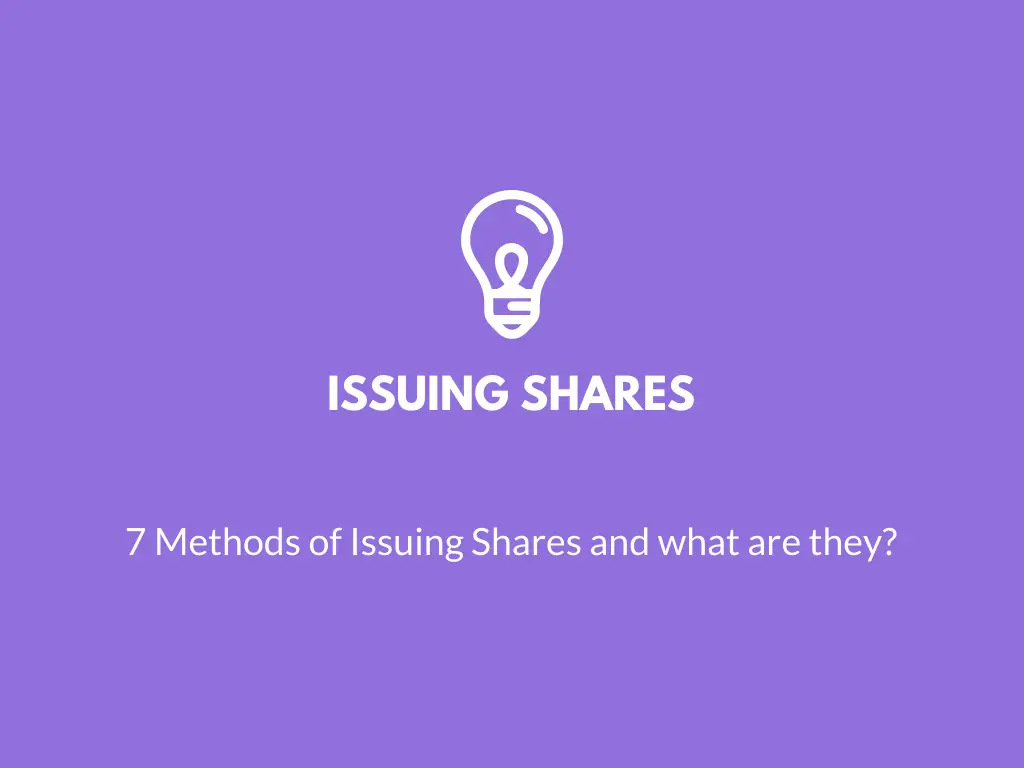The share issue is the method of offering securities to raise funds from investors. Companies use various methods of issuing shares. 7 methods of issuing shares are described below:

1) Public Offering
A public offering known as Initial Public Offer (IPO) involves a company inviting the general public to subscribe to or purchase its shares.
It is the sale of equity shares or other financial instruments to the general public in order to raise capital.
The capital is raised to cover operational shortfalls, fund business expansion, or make strategic investments.
Financial instruments include common or preferred shares or other assets that can be traded like bonds. An initial Public Offering is the first time a private company issues stock to the public.
In an IPO, an external IPO team is formed, including the lead and additional underwriters, information regarding the company is compiled, the financial statements are submitted for official audit, the company files its prospectus with the Securities of Exchange Commission (SEC), and sets a date for the offering.
2) Offer for Sale
Offer for sale is a method of share sale where the public is invited to purchase a company’s existing shares.
The shares are offered to the public at a fixed price by the issuing house, which is sufficiently above the price it has itself paid to cover its own expenses.
Shareholders can use this method to take advantage by combining public offers with an offer for sale.
Every investor will indicate how many shares they think they will purchase at what price. The company should pick a price where all the shares will be offered at the best price.
Using the Offer for sale method, the company that is issuing shares can use the financial strength and image of the issuing house.
3) Prospectus Issue
A prospectus is a formal document that can help investors to make more informed investment decisions. A prospectus is required and filled by the SEC, providing details about an investment offering to the public.
Using prospectus, a company will invite the general public to participate in the share issue.
The prospectus will carry information about the company, and its past, present, and future expectations.
The prospectus issue is an expensive method of issuing shares because the company issuing the shares has to bear the cost of preparing the prospectus and other necessary costs.
Companies can make use of an issuing house for the administration of the share issue.
4) Placing
Placing is the issue of new securities by selecting certain investors who have the most chance of being interested in investment companies.
Placing will be a low-cost and simple method of issuing shares. It does not require paperwork and administrative overhead.
There are two types of placing_ private placing and stock exchange placing. Private placing is when a finance company provides capital in the form of the purchase of shares or an issue of debentures.
Stock exchange placing is where a firm acts as the agent of a company selling shares publicly.
5) Stock Exchange Introduction
This is where the company already shares in the issue but wants to be quoted through the stock exchange. In a stock exchange introduction, the company will obtain a facility with the existing shares traded in the stock exchange.
The company usually appoints a broker to sell the shares to the public, and the broker must be a member of the stock exchange.
6) Right Issue
The right issue is a way to use which companies raise additional capital. In the right issue, a company gives its existing shareholders a right to buy new shares of the company at a discount from its current market price.
The right issue works as an option so the shareholders can choose to exercise it or not. Generally, when companies need money and want to raise capital quickly, the right issues are used.
Many companies raise additional capital using the right issue to clear the debt.
Some solvent companies also use the rights issue to pursue other growth opportunities. Right issues are generally not preferred by shareholders because they need to buy additional shares to avoid loss due to dilution.
It is important that shareholders appropriately assess the reasons for the right issue and take action accordingly.
7) Bonus Issue
Using bonus issues, companies may capitalize on their retained earnings by making a bonus issue to their existing shareholders as no cash will be paid in such issues.
Bonus issues are given when companies are short of cash and shareholders expect a regular income.

